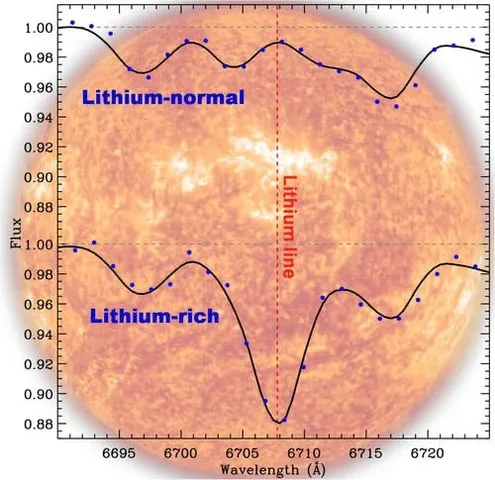
Unveiling the Inner Workings of Lithium-rich Red Giants through Asteroseismology
This project aims to investigate these enigmatic stars using asteroseismology, the study of stellar oscillations.
Project status
Content navigation
About

Modern spectroscopic surveys have uncovered a surprisingly large population of helium-burning red giant stars enriched in lithium. This is puzzling: according to our current understanding of stellar evolution, these stars should either be rare or not exist in the observed numbers. The processes leading to their unusual chemical composition remain largely mysterious, posing an exciting challenge for astrophysics.
This project aims to investigate these enigmatic stars using asteroseismology, the study of stellar oscillations. Stellar oscillations act like seismic waves in stars, carrying information from their outer layers down to their cores. By analysing these oscillations, we can probe the internal structure of stars and search for signatures of the processes responsible for lithium enrichment.
The student will work with high-precision photometric data from the Kepler space telescope, focusing on the oscillation spectra of helium-burning red giants. The project will involve:
- Extracting and analysing the characteristic oscillation frequencies of these stars, with particular attention to mixed modes i.e., the oscillations sensitive to both the core and envelope.
- Applying statistical techniques to measure and compare oscillation properties between “normal” helium-burning red giants and their lithium-enriched counterparts.
- Using both stellar models and data-driven machine methods to identify subtle differences in the oscillation power spectra that could indicate unusual internal processes.
By combining observational data with advanced analysis techniques, this project aims to identify physical mechanisms behind lithium enrichment in red giants and improve our understanding of stellar evolution in the late stages of a star’s life. This work will provide hands-on experience in data analysis, stellar modelling, and modern computational techniques in astrophysics.
Image: The stellar spectra of a normal star, and an Li-rich star; these reflect the surface abundance of Li.


